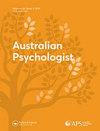Cross-cultural validation and measurement invariance of the Perth Alexithymia Questionnaire (PAQ): a study in Iran and the USA
IF 2
4区 心理学
Q2 PSYCHOLOGY, MULTIDISCIPLINARY
引用次数: 1
Abstract
ABSTRACT Objective Alexithymia is a trait defined by difficulty in identifying and describing feelings, as well as externally oriented thinking. It is an important transdiagnostic risk factor for a range of psychopathologies, and therefore its assessment is of substantial interest. Recently, the Perth Alexithymia Questionnaire (PAQ) was developed to try to enable more comprehensive assessments of alexithymia. To date, no studies have examined the PAQ’s psychometric properties among adolescents, and few have examined non-Western populations. Method To address these gaps, here we examined the psychometric properties of the PAQ among three samples of Iranian adolescents (N = 557, 53% female, Mage = 14.94, SD = 1.29), Iranian adults (N = 926, 62% female, Mage = 32.52, SD = 9.65) and American adults (N = 242, 40% female, Mage = 40.69, SD = 11.91). Results Confirmatory factor analysis supported the intended five-factor model (that distinguished between different facets of alexithymia across positive and negative emotions) within all three samples. This five-factor model was invariant across genders, ages and cultural groups. Furthermore, the PAQ subscales showed good internal consistency, test–retest reliability and concurrent validity. Conclusions Overall, the present findings indicate that PAQ has strong psychometric properties among both Middle Eastern and Western samples, and functions similarly across adults and adolescents. The PAQ therefore appears to be a useful tool for comprehensively operationalising alexithymia across a diverse range of populations. Key Points What is already known about this topic: Heightened alexithymia contributes to the development and maintenance of numerous forms of psychopathology. The assessment of alexithymia has been limited as it primarily focuses only on negative emotions. The Perth Alexithymia Questionnaire (PAQ) was recently developed to provide an integrated and valence-sensitive assessment of alexithymia. What this topic adds: The PAQ can be used to measure alexithymia in both adults and adolescents. The intended five-factor structure of the PAQ, which distinguishes between different facets of alexithymia across positive and negative emotions, was supported. The intended factor structure of the PAQ was found to be invariant in terms of gender, age, and cultural groups.珀斯述情障碍问卷(PAQ)的跨文化验证与测量不变性:伊朗与美国的研究
本文章由计算机程序翻译,如有差异,请以英文原文为准。
求助全文
约1分钟内获得全文
求助全文
来源期刊

Australian Psychologist
PSYCHOLOGY, MULTIDISCIPLINARY-
CiteScore
3.70
自引率
5.30%
发文量
32
期刊介绍:
The Australian Psychologist is the official applied practice and public policy journal of the Australian Psychological Society. As such, the journal solicits articles covering current issues in psychology, the science and practice of psychology, and psychology"s contribution to public policy, with particular emphasis on the Australian context. Periodically, Australian Psychological Society documents, including but not limited to, position papers, reports of the Society, ethics information, surveys of the membership, announcements, and selected award addresses may appear in the journal.
 求助内容:
求助内容: 应助结果提醒方式:
应助结果提醒方式:


